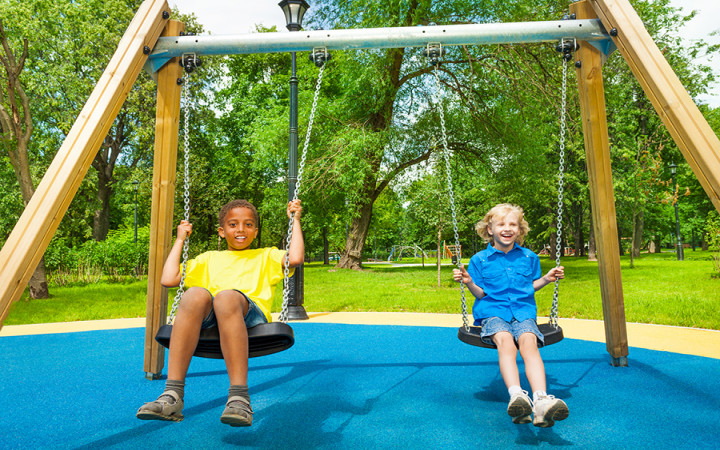Today’s Wonder of the Day was inspired by Olivia+Amelia from Fairhall. Olivia+Amelia Wonders, “Who invented swings?” Thanks for WONDERing with us, Olivia+Amelia!
Is it time for recess yet? With the exception of lunch, recess is usually the time kids look forward to the most each day. After sitting in class for a couple of hours, it's always good to stretch your legs and have some fun with your friends.
What do you like to do at recess? Some kids might play foursquare, soccer, or tag. Others might head straight for the merry-go-round. Many kids prefer to soar back and forth through the air, feeling the wind in their hair as they try to go higher and higher on the swings.
Swings are a staple of many school playgrounds and public parks. Most adults have fond memories of time spent playing on the swings when they were children. So how long have swings been around?
No one knows who invented swings, but it's clear they've been around a really long time. The first primitive swings may have been nothing more than thick vines that grew naturally on large trees.
It's not difficult to imagine primitive humans grabbing a vine and swinging out over the water before dropping into a swimming hole. Although that's just supposition, the earliest evidence of swings dates back to the ancient Greeks. Historians have found painted vases from as early as the 5th century B.C. that depict women and children swings.
Over the course of the centuries that followed, swings were made from a variety of materials: vines, wood, rope, steel, tires, and plastic. As for the swings we find in public parks and school playgrounds, experts believe those began to pop up in the latter part of the 19th century.
Swings are definitely fun, but they can be educational, too! If you pay attention while you're swinging, you'll learn a few things about the physics of motion.
Swings work by converting potential energy into kinetic energy. When you pull back on a swing as far as you can, you're building up potential energy. When you pull your feet off the ground, the potential energy turns into kinetic energy, or energy of motion.
Opposing forces, such as gravity and friction, will eventually bring you to a stop, unless you supply more energy. That extra energy can be in the form of someone pushing you, or you can generate it yourself by pumping your legs as you swing.
Pumping your legs helps you to swing higher, which increases your potential energy at the top of each swing. As you swing back, you can also push off the ground with your feet to go higher into the air. The higher you go, the more potential energy you have. The more potential energy you have, the more kinetic energy it'll convert to!




